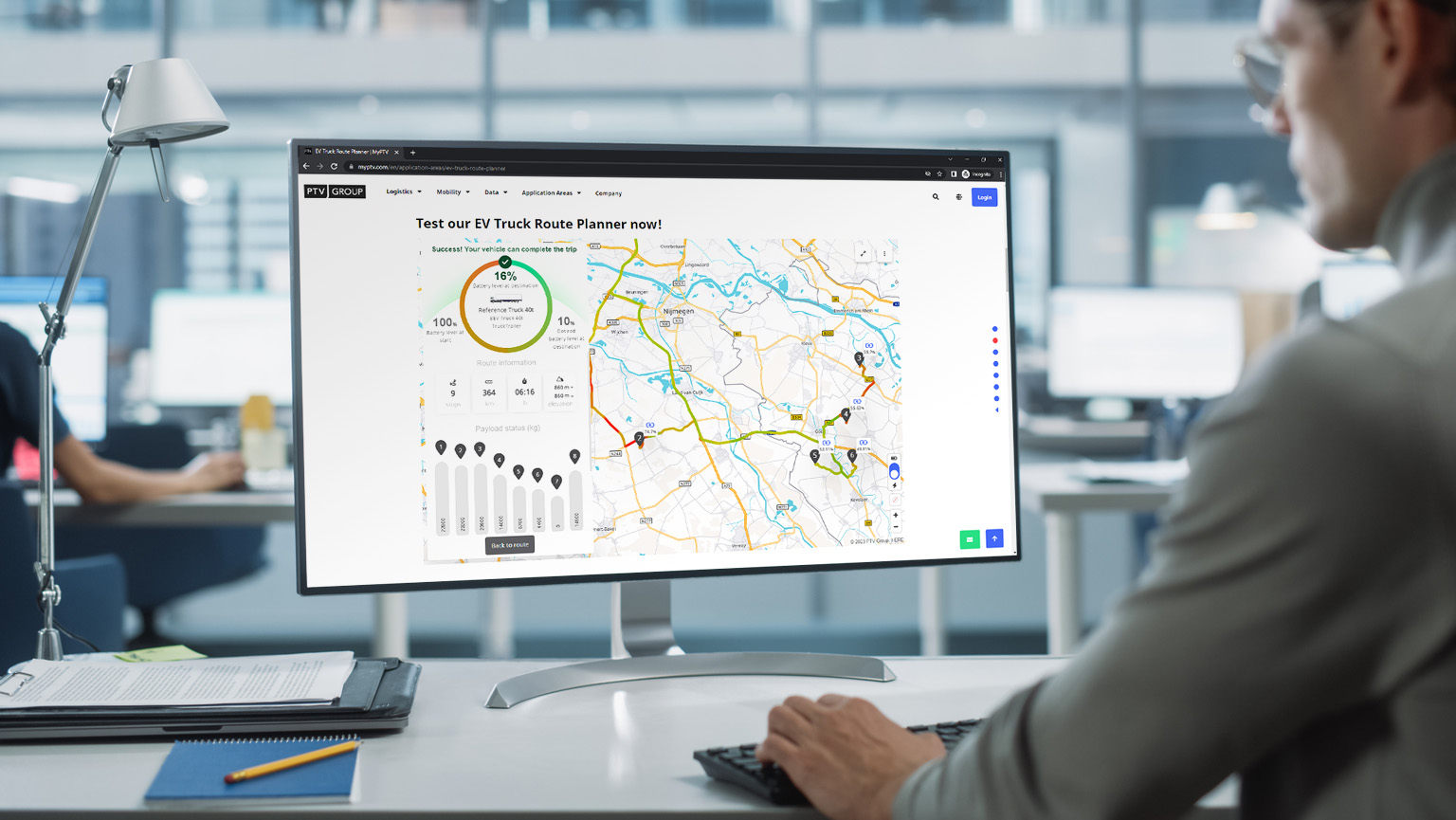eTruck Route Planning
In addition, the wide variety of electric vehicles means planners have more options than ever before. With the EV Truck Route Planner, PTV enables transport companies to get a good impression of working with eTrucks or eVans.
Sustainability has been talked about in the transport sector for years. And for just as long, there have been transport companies with idealists at the helm who are highly motivated to make their transport operations more sustainable and reduce CO2 emissions. “We desperately need those companies to get and keep the energy transition going. But they are only a small leading group. Most transport companies are run by practical-minded people with a focus on cost and efficiency rather than sustainability. They desperately need this focus to survive,” says Michael Hubschneider, Senior Product Manager at PTV Logistics.

Sustainability has been talked about in the transport sector for years. And for just as long, there have been transport companies with idealists at the helm who are highly motivated to make their transport operations more sustainable and reduce CO2 emissions. “We desperately need those companies to get and keep the energy transition going. But they are only a small leading group. Most transport companies are run by practical-minded people with a focus on cost and efficiency rather than sustainability. They desperately need this focus to survive,” says Michael Hubschneider, Senior Product Manager at PTV Logistics.
Test EV truck route calculation & planning yourself!
